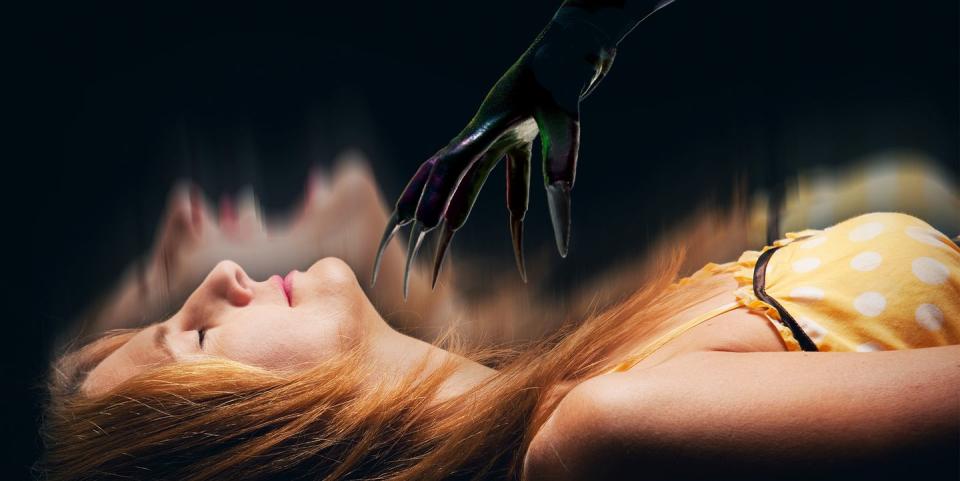Why Some People Conjure Terrifying ‘Sleep Paralysis Demons,’ According to a Neuroscientist

Have you ever hallucinated getting out of bed, only to find out later that you’re still asleep? How about multiple times in a row? Ben Rein, a neuroscientist at Stanford University and a social media science communicator, has had that jarring experience many, many times.
In part 5 of our neuroscience expert series with Rein, Pop Mech video producer Ken Kawada sat down with him to discuss how the brain tricks people into having hallucinations while asleep.
Hypnagogic Hallucinations
Rein is diagnosed with narcolepsy—a chronic sleep disorder characterized by overwhelming, uncontrollable daytime drowsiness and sudden attacks of sleep. He has also experienced hypnagogic hallucinations, or short-lived, disturbingly realistic imagery that tricks the brain as you’re falling asleep.
First the brain enters a sleep state, then slowly descends into a deep sleep, before finally surfacing slightly to enter a dreaming period called Rapid Eye Movement (REM). The full process takes about 60 to 90 minutes. This acts as a buffer between being conscious and dreaming, which is why people often have trouble remembering their dreams, Rein explains.
🎥 Don’t Sleep on Our Other Neuroscience Videos
5 Simple Tricks to Reduce Your Risk of Depression, According to a Neuroscientist
3 Brain Hacks to Boost Your Memory and Problem-Solving as You Age
Your Dreams May Be Practice For Real Life, According to a Neuroscientist
For people who experience sleep hallucinations, the period between consciousness and REM sleep is shorter. These fits can plague people with narcolepsy, in which a person enters directly into REM sleep—they’re awake, and then they’re suddenly partially conscious and dreaming. This situation is comparable to a hallucination before reaching a true dreaming state. “I’ve experienced a lot of hypnagogic hallucinations,” Rein admits. “They’re definitely pretty wild.” These types of hallucinations aren’t very common, because you need to have some sort of condition that affects your sleep, he adds.
Hypnopompic Hallucinations
Hypnopompic hallucinations, on the other hand, happen while you’re waking up. They are connected to sleep paralysis, which can be downright scary. “What happens is in sleep paralysis, during REM sleep, when you’re dreaming, your body is paralyzed, you have your brain intentionally disconnected from your body so that you’re not moving around acting out your dreams, for obvious reasons, of course,” Rein says. (Naturally, you wouldn’t want to inadvertently punch your sleeping partner in the face while acting out a fight scene in your dream.)
However, during this rapid shift from REM sleep to wakefulness, the brain-body disconnection doesn’t necessarily happen for people who experience sleep paralysis. “And so you end up remaining body-locked and paralyzed because your brain thinks, ‘I’m still dreaming right now.’ But you are conscious enough to recognize that you are awake,” Rein says.
Since your brain is still hovering at the border between dreamland and wakefulness, you are not only paralyzed, but also hallucinating. You may even think you’re being attacked—a horrifying experience people call sleep paralysis demons. “These are actually hypnopompic hallucinations, because really, what’s happening is, the mysterious things happening in the dream world are leaking over into real life. And so it seems very real, but it’s still really a dream,” he explains.
Rein feels lucky that he doesn’t have the scary version of sleep paralysis, even though he does have hypnopompic hallucinations. He just keeps thinking he’s getting out of bed and standing up. “Eventually, I sort of have to tense my body up enough where I do break out of it, and I stand up,” he says.
You Might Also Like
